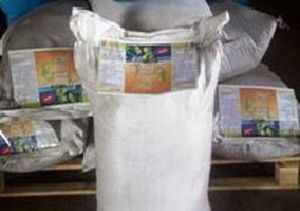Main Sector of relevance\IRC classification 7. Environment and Safety
7.23 Lignum fossil sapropelic and humic ameliorants of sandy soil

Developers’ contact information
State Scientific Institution “Institute of Nature Management of
the National Academy of Sciences of Belarus”,
Research and Development Establishment for Physical-Chemical Problems of the
Belarusian State University
10, F.Skarina Str., 220114 Minsk
Summary
Products on the basis of new lignum fossil sapropelic compositions and saline forms of humic acids.
Description
Lignum fossil sapropelic and humic ameliorants of sandy soil appear as discrete material of brown and dark-brown colour consisting of organic components or water solution of dark-brown colour containing water-soluble compounds of humic, lignum humic and fulvic acids.
Technology type
Technical advantages and economic benefits
As to their consuming properties the suggested products can compete with the best foreign analogues whereas their production cost is much lower. The developed technology makes it possible to manufacture products using local raw materials.
Technology differentiation and uniqueness
Creation of high-technology production that is in demand among consumers.
Context in which technology was identified
12th International Specialized Exhibition “Chemistry, Oil and Gas”, 27-30.05.2008, Minsk.
Technological keywords
Ameliorants, humic substances, lignum fossil, lignine, sapropel, re-cultivation, fertility.
Development Stage
Intellectual property rights
Range of applications
Ameliorants of sandy soil are used for reduction of non-production losses of soil (irrigation) moisture that goes to evaporation; re-cultivation of territories affected by human economic activities; reduction of osmotic stress for plants growing on saline soil, etc. They are also used as organic fertilizers for cultivation of agricultural crops.
Classifier Used at the EU Innovation Relay Centres
Preferable Regions
Practical experience
Low-tonnage production.
Environmental impact
None
Type of collaboration sought
Terms and restrictions
— None
Available technical assistance